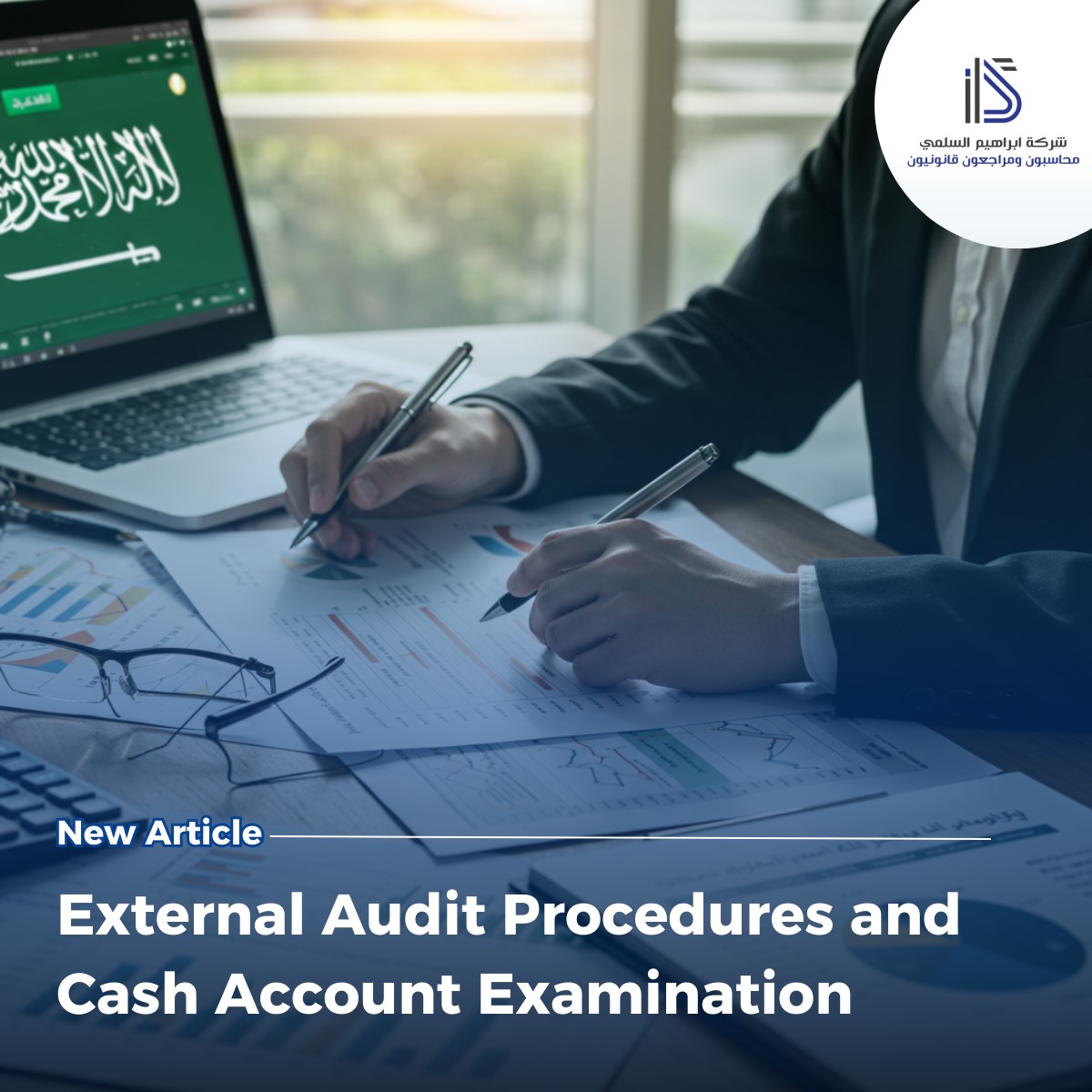External Audit Procedures and Cash Account Examination
The external audit and cash account examination process is a crucial part of financial auditing for companies, aiming to ensure the accuracy and reliability of financial data related to cash. This guide outlines the steps and procedures followed by external auditors to ensure compliance with accounting standards and enhance financial transparency.
1. Planning Stage
The planning stage forms the foundation for an effective audit and includes:
-
Defining the scope of the audit:Determining the time period covered, the accounts, and the branches to be audited.
-
Risk assessment:Analyzing potential risks such as fraud, accounting errors, and weak internal controls.
-
Developing an audit strategy:Identifying the necessary procedures to mitigate risks and determining the sample size to be examined.
-
Allocating resources:Defining the required resources, including time, the audit team, and the technologies used.
2. Internal Controls Evaluation
Auditors assess the effectiveness of internal controls related to cash management through:
-
Understanding the internal control system:Studying the procedures and policies governing cash management, such as deposit and withdrawal processes, financial authorizations, and task segregation.
-
Testing controls:Verifying the efficiency of internal controls in minimizing errors and fraud.
-
Identifying weaknesses:Detecting any gaps in the internal control system and recommending necessary improvements.
3. Audit Procedures
Auditors perform several tests to verify the accuracy of financial data related to cash, including:
A. Cash Balance Verification
-
Preparing an analytical statement of bank accounts and cash funds:Matching cash balances with financial statements and the trial balance.
-
Obtaining bank statements:Extracting reports from the company’s accounting system and comparing them with bank-provided statements.
-
Reconciling balances with bank statements:Reviewing recorded book balances against bank balances and resolving any discrepancies.
-
Requesting bank confirmations:Sending confirmation requests to banks to verify balances and undisclosed obligations.
-
Preparing a bank reconciliation statement:Analyzing differences between book balances and bank balances, such as outstanding deposits.
-
Reviewing foreign currency accounts:Ensuring that exchange rate differences are properly recorded in financial statements.
-
Conducting a physical cash count:Attending the actual cash count in safes and cash registers and ensuring they match accounting records.
B. Review of Cash Transactions
-
Examining documents:Reviewing invoices and receipts supporting cash transactions to verify their validity.
-
Tracing transactions:Following a sample of cash transactions from initiation to completion to ensure accurate recording.
-
Analyzing accounting entries:Verifying that cash-related journal entries are recorded correctly according to accounting standards.
-
Analyzing financial trends:Examining any unusual changes in cash balances that may indicate financial issues.
-
Detecting fraud:Implementing special procedures to uncover suspicious transactions or illegal financial activities.
4. Audit Report Preparation
Upon completing the audit, the auditor prepares a report that includes:
-
Professional opinion:Assessing the accuracy of financial data related to cash and its compliance with accounting standards.
-
Findings:Highlighting any errors, weaknesses, or violations discovered.
-
Recommendations:Suggesting improvements for internal controls and cash management.
-
Auditor’s reservations:In some cases, the auditor may refrain from giving a clear opinion if sufficient evidence regarding cash balances cannot be obtained.
5. Follow-Up
The audit process requires continuous follow-up to ensure the implementation of recommendations and the resolution of weaknesses. The company must take corrective actions to improve cash management and comply with accounting standards.
Importance of Audit Procedures in Financial Accuracy
Audit Procedures are essential in ensuring the accuracy and reliability of financial statements. By applying structured Audit Procedures, auditors can verify whether a company’s financial records truly reflect its operations and comply with accounting standards. These Audit Procedures include reviewing transactions, testing internal controls, and confirming balances with third parties. Without well-designed Audit Procedures, errors and irregularities might remain undetected, which could harm the credibility of financial reports and reduce investor confidence.
Audit Procedures as a Tool for Risk Assessment
One of the primary objectives of Audit Procedures is to identify and evaluate risks within an organization. Through Audit Procedures such as analytical reviews, sampling, and control testing, auditors can detect areas vulnerable to fraud, mismanagement, or compliance issues. Effective Audit Procedures help auditors assess whether internal controls are functioning properly and whether financial reporting is free from material misstatements. The stronger the Audit Procedures, the more reliable the risk assessment becomes, which ultimately protects stakeholders’ interests.
Enhancing Compliance Through Audit Procedures
Audit Procedures also play a major role in ensuring compliance with laws, regulations, and accounting standards. Companies operating in highly regulated sectors rely on consistent Audit Procedures to demonstrate adherence to financial reporting requirements. By applying detailed Audit Procedures, auditors can highlight weaknesses in compliance systems and recommend corrective actions. This not only reduces the likelihood of penalties or legal disputes but also strengthens corporate governance. In this way, Audit Procedures serve as a bridge between management, regulators, and investors.
The Broader Impact of Audit Procedures on Business Growth
Beyond accuracy and compliance, Audit Procedures have a broader impact on the sustainability and growth of businesses. Well-implemented Audit Procedures provide management with valuable insights into operational efficiency and financial health. They help in identifying cost-saving opportunities, improving internal controls, and fostering accountability across departments. By consistently applying Audit Procedures, organizations enhance transparency and build trust with investors and partners. This trust is a vital factor that encourages long-term investment and supports overall economic development.
Conclusion
External audit procedures and cash account examination play a vital role in ensuring the accuracy of financial data and strengthening confidence in financial reports. By applying the correct methodologies, auditors can provide an accurate assessment that enhances the company’s credibility and contributes to its financial stability.
